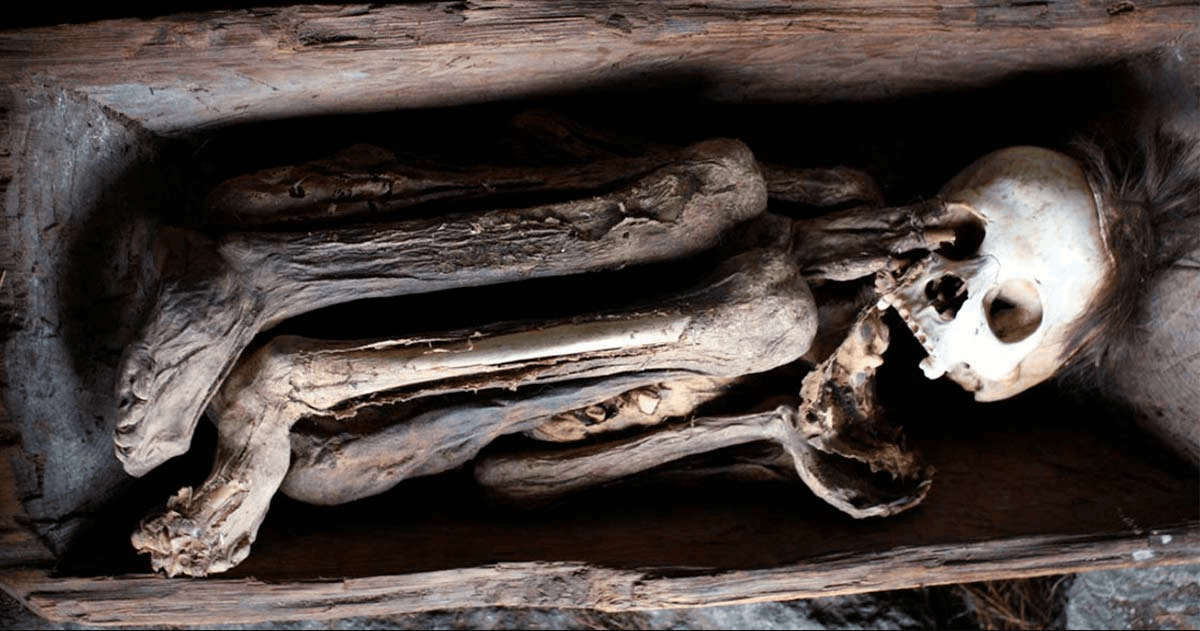Mummification of the deceased is a well-known practice from ancient times. Most notably, the Egyptians utilized a mummification process that led to today’s cliché image of a deceased body covered in gauzy wrappings. The discovery of mummified remains in several caves in the Philippines represents a different type of mummy – the fire mummy.
Found in caves in the town of Kabayan, in the Benguet province of the Philippines, the fire Kabayan cave mummies are human remains that were preserved through a lengthy dehydration and smoking process. These well-preserved remains have given researchers insight into a unique mummification process, and into the tribal people who engaged in those methods.

The Intricate Mummification Process: From Salty Beverages to Tobacco Smoke
The Kabayan mummies are also known as the Ibaloi mummies, Benguet mummies, or Fire mummies. They were located in many caves in the area, including Timbak, Bangao, Tenongchol, Naapay, and Opdas.
Smoking is not a common mummification technique, and it was a very lengthy process, but it was successfully used to preserve many bodies throughout the years. Scientists have estimated that the Kabayan mummies were created by members of the Ibaloi tribe sometime between 1200 and 1500 AD. The timeline is debated, as some scientists have speculated that the mummification practice dates back thousands of years. While the date that the practice began is in dispute, there is agreement that it ended in the 1500s. When Spain colonized the Philippines, the smoking mummification process died out, and was no longer practiced.

It is believed by some that only tribal leaders were mummified through smoking. The unique mummification process was said to actually begin before death, with an individual participating in the initial steps.
As death approached, the individual would drink a beverage with a very high concentration of salt. Drinking saltwater is known to dehydrate the body, so this initial step was used to start the drying process prior to death. After the individual passed away, the rest of the mummification process would take place. It is estimated that this process took anywhere from several weeks, to several months to complete.
The body was thoroughly washed, and then placed above a heat source in a seated position. The body was not exposed to actual fire or flames, but remained suspended above the smoldering kindling. Rather than burning the body, the heat and smoke would slowly and completely dehydrate the entire body. The internal drying process was ritually furthered along by blowing tobacco smoke into the deceased’s mouth. This was thought to help to remove all fluids from the internal organs.
Finally, the smoked body was rubbed down with herbs. Upon completion of the mummification process, the body was placed in one of the caves, where they were eventually discovered.

The Precarious State of the Kabayan Cave Mummies: Theft and Vandalism Concerns
To this day, the Kabayan mummies remain in the caves within which they were found. Although the caves are located in a very remote area, theft and vandalism are very real concerns, leading the area to be designated as one of the 100 Most Endangered Sites in the world, by Monument Watch. It is also under consideration to be designated as a UNESCO World Heritage Site.
One mummy of distinction, known as Apo Annu, was stolen from the caves in the early 1900s. Apo Annu was dressed in clothing that would have been worn by a tribal chief, and he was in a crouching position. His mummified body was covered in intricately designed tattoos. Apo Annu is considered to have been a great hunter, and was believed to be half human, half deity. Eventually, Apo Annu was returned to the Ibaloi tribe. They greatly desired the return of Apo Annu, because they believed that his absence caused many natural disasters, including earthquakes, droughts, disease, and poor harvests.
Upon the return of Apo Annu, the Ibaloi reburied the mummy in hopes of restoring the balance that had been disrupted by his disappearance. Today, there are still several stolen Kabayan mummies that have not yet been returned, however the return of Apo Annu signals a desire to maintain the mummies in their rightful burial locations.

In the period spanning April 24 to May 3, 2017, the Museum of Natural History worked together with the National Museum of the Philippines in documenting, identifying, and assessing fungi that are present in the mummies. The initiative aimed at devising strategies to prolong the preservation of the mummies. This included assessing the fungal presence since “increasing humidity levels within the caves can potentially harm the coffins, the mummified bodies, and the clothing in which they were interred.” However, protection primarily involves establishing physical barriers and security measures to deter theft, vandalism, and damage.

The Kabayan mummies which have lasted through several centuries, remain endangered and may be at risk of disappearance and destruction. By declaring the Kabayan caves to be a protected site, and by keeping the location of some of the mummies secret, the caves and the mummies may be safe guarded against future looting and damages.
The Ingenious Legacy of the Ibaloi Tribe: Kabayan Mummies as Testaments to Ancient Practices
The Kabayan mummies are a striking example of the ingenuity of the ancient Ibaloi tribe, and the painstakingly lengthy processes they would go through to tend to their deceased. To this day, the Ibaloi tribe believes these to be sacred burial grounds.
Hopefully, continued protections will allow the discovery of further information about the ancient Ibaloi tribe and the unique fire mummies, while preserving the sacred remains and the areas in which they were found.